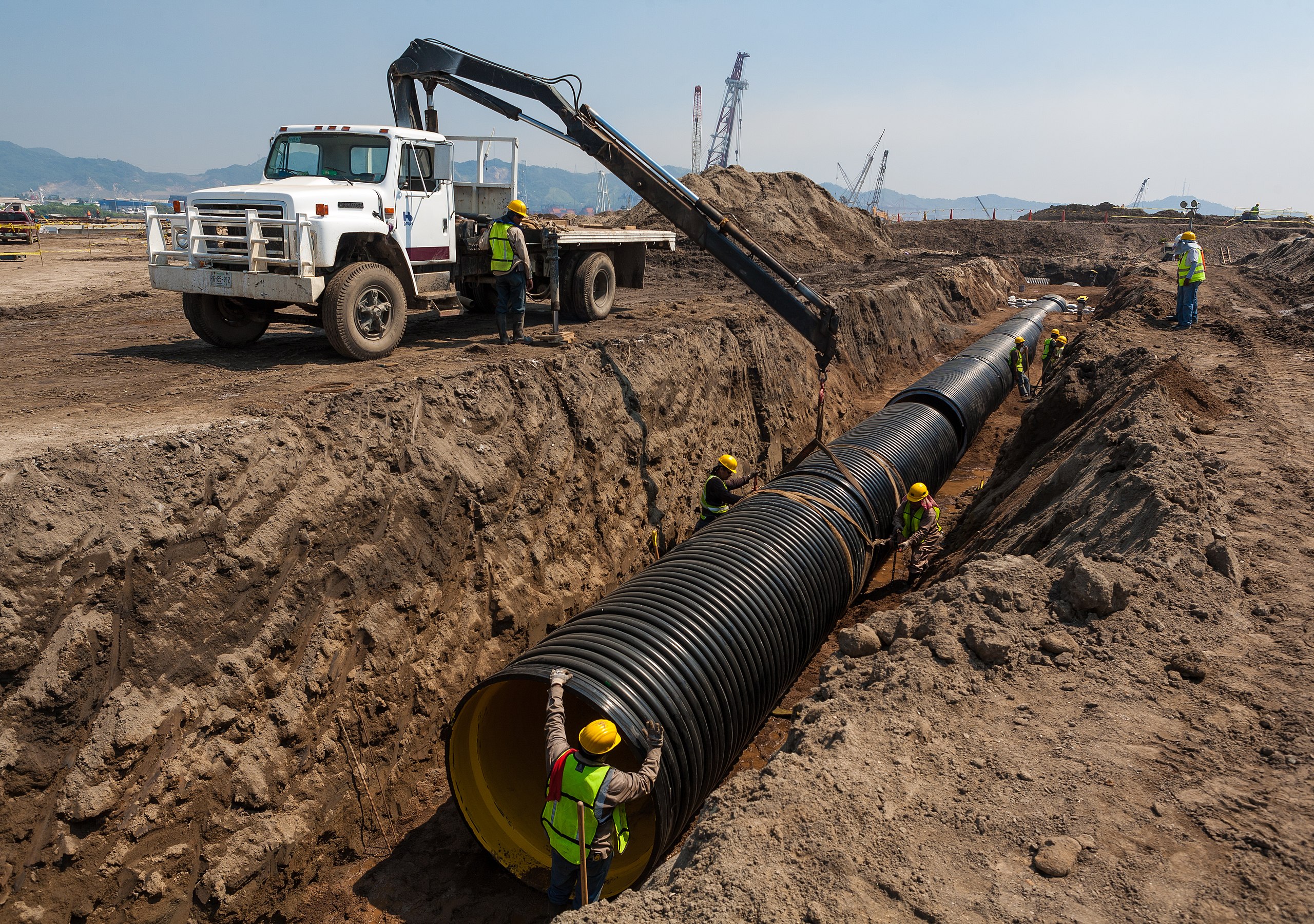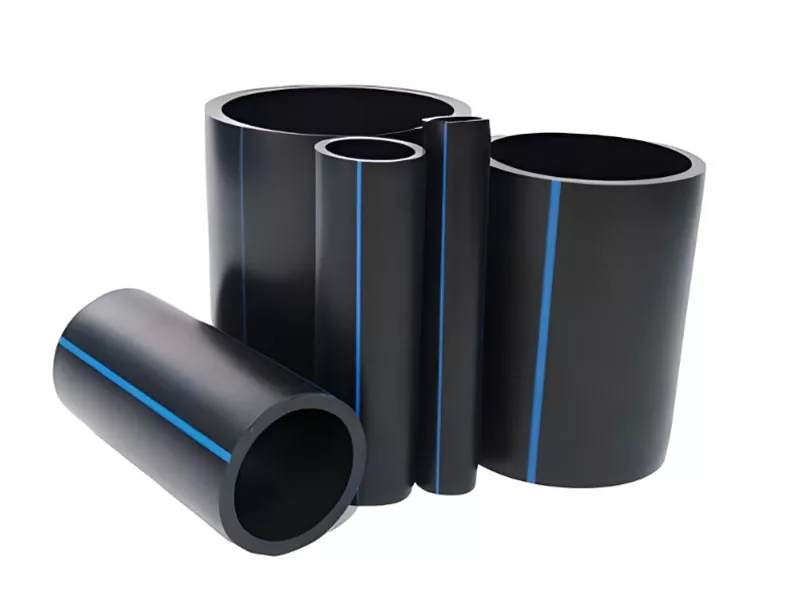How hdpe pipe suppliers Midland TX Are Enhancing Agriculture
Check Out the Production Refine Behind High-Quality HDPE Pipeline and Its Applications
The production process of top quality HDPE pipelines is complex and systematic. It begins with the choice of resources that improve performance. Following this, ethylene goes through polymerization to create material, which is then formed through extrusion. Quality assurance is extremely important, making sure that the final product fulfills rigid requirements. However, the journey of HDPE pipelines doesn't finish with manufacturing. Their applications across numerous markets expose a broader importance worth examining.
Comprehending HDPE: Properties and Advantages

High-density polyethylene (HDPE) is a functional polycarbonate known for its longevity and resistance to different ecological factors. This material displays exceptional tensile toughness, making it appropriate for demanding applications. Its low-density framework adds to a light-weight product, helping with ease of dealing with and installment. HDPE additionally showcases exceptional resistance to chemicals, which reduces destruction when exposed to harsh compounds.
The material's low moisture absorption additionally improves its durability, making it excellent for usage in pipes and tank. Furthermore, HDPE is resistant to ultraviolet (UV) radiation, making certain that products maintain their honesty even when revealed to sunlight. Its adaptability permits for the production of detailed shapes without compromising stamina. The environment-friendly nature of HDPE, often originated from recycled products, contributes to its allure, promoting lasting practices in production. On the whole, these residential properties and advantages make HDPE a recommended option for different industrial and customer applications.
Raw Material Option for HDPE Production
The choice of raw materials for HDPE production is necessary to confirm the final item fulfills the wanted requirements and top quality criteria. High-density polyethylene (HDPE) is mostly generated from polymerized ethylene, originated from fossil gas such as natural gas or unrefined oil. The high quality of these feedstocks substantially affects the mechanical and thermal homes of the last HDPE.
Ingredients additionally play a substantial function in enhancing HDPE's efficiency, consisting of antioxidants, UV stabilizers, and colorants, which improve sturdiness and resistance to ecological variables. The selection process need to consider not only the chemical structure of the raw materials however additionally their handling features to guarantee efficient manufacturing.
In addition, the sourcing of basic materials must focus on sustainability and conformity with environmental guidelines, as accountable methods are crucial in today's market. Inevitably, mindful raw material choice lays the foundation for producing high-quality HDPE pipes suitable for varied applications.
The Extrusion Process: Forming HDPE Pipeline
The extrusion process plays a crucial duty in forming HDPE pipes, beginning with careful product preparation techniques that guarantee excellent circulation and uniformity. Just as important is the layout of the die, which directly influences the final measurements and surface area top quality of the pipe. Together, these factors contribute greatly to the performance and quality of HDPE pipeline production.
Product Preparation Methods
Reliable manufacturing of HDPE pipes starts with precise material prep work strategies, especially the extrusion procedure. Throughout this phase, high-density polyethylene resin is first dried to eliminate dampness, guaranteeing suitable circulation features. The resin is then fed into the extruder, where it goes through home heating and melting, transforming right into a thick state. This heating procedure is very carefully managed to keep the material's honesty and performance. The liquified HDPE is required via a die, forming it right into a continuous pipeline type. Appropriate temperature level monitoring throughout extrusion is crucial, as it straight impacts the material's buildings and the end product top quality. Once shaped, the HDPE pipe is cooled and reduced to defined sizes, ready for subsequent handling and applications.
Die Design Significance
Precision in die layout plays an important duty in the extrusion procedure of HDPE pipelines. The die acts as the final shaping device, straight influencing the pipeline's measurements, wall surface density, and surface area coating. A well-designed die guarantees consistent material flow, lowering issues such as abnormalities and vulnerable points. The geometry of the die should be enhanced to fit the details homes of HDPE, including its viscosity and thermal behavior during extrusion. Furthermore, the cooling price of the product as it passes through the die can considerably influence the pipeline's architectural honesty. Spending in sophisticated die technology is important for makers intending to generate high-quality HDPE pipes that satisfy market standards and client assumptions.
Quality Assurance Procedures in HDPE Production
Different variables influence the top quality of HDPE pipeline manufacturing, effective top quality control procedures are critical to ensure uniformity and integrity in the final product (Texas hdpe pipe manufacturer). Trick quality assurance methods consist of extensive material examination, validating that the raw polyethylene fulfills recognized standards for pureness and density. During the extrusion procedure, specifications such as temperature, stress, and cooling time are carefully monitored to maintain dimensional precision and structural honesty
In addition, post-production screening is vital; suppliers frequently conduct hydrostatic tests to examine the pipe's toughness and resistance to pressure. Aesthetic evaluations for surface defects even more boost quality assurance. Certification from pertinent standards organizations, like ASTM or ISO, supplies an added layer of integrity. By applying these extensive quality assurance measures, producers can decrease defects, enhance performance, and guarantee that the HDPE pipes meet the details demands of numerous applications, inevitably leading to customer fulfillment and count on the product.
Applications of HDPE Pipeline Across Industries
HDPE pipes are utilized across different fields due to their sturdiness and versatility. In water distribution systems, they guarantee efficient distribution, while in wastewater monitoring, they supply dependable services for waste transport. Additionally, agricultural irrigation networks profit from HDPE's resistance to deterioration and adaptability, making it an excellent choice for modern farming practices.

Water Circulation Systems
A significant number of industries depend on high-density polyethylene (HDPE) pipelines for efficient water distribution systems. Understood for their sturdiness and resistance to corrosion, HDPE pipes are extensively used in local water check my source networks, agricultural irrigation, and industrial applications. Their lightweight nature helps with very easy handling and installation, decreasing labor expenses and time. In addition, HDPE pipelines can accommodate various pressure levels, making them ideal for both reduced and high-pressure systems. Pipe Manufacturing Midland TX. The versatility of the material enables seamless combination right into existing framework, reducing the demand for considerable excavation. In addition, HDPE's resistance to chemical leaching warranties that the water provided continues to be secure and tidy, making it an excellent choice for preserving the high quality of drinkable water throughout numerous fields
Wastewater Management Solutions
Reliable water distribution systems additionally pave the means for innovative wastewater management services, where high-density polyethylene (HDPE) pipes play a substantial function. Popular for their longevity and resistance to rust, HDPE pipes are optimal for carrying wastewater in numerous settings. Their flexibility permits simple installment in complicated environments, minimizing the requirement for considerable excavation. Furthermore, HDPE's smooth indoor surface area reduces rubbing, improving circulation rates and effectiveness. These pipelines are likewise resistant to chemical leaching, ensuring that contaminants do not jeopardize the surrounding setting. Industries, communities, and treatment facilities progressively count on HDPE pipes for their integrity and long life, making them a preferred selection for contemporary wastewater monitoring systems. This versatility underscores the crucial value of HDPE pipes across many applications.
Agricultural Irrigation Networks
Agricultural irrigation networks benefit considerably from using high-density polyethylene (HDPE) pipelines, which supply reliable and dependable water delivery to crops. HDPE pipelines are lightweight, making them very easy to move and set up, while their flexibility permits numerous configurations in varied surfaces. These pipes demonstrate outstanding resistance to corrosion, chemicals, and UV radiation, guaranteeing longevity in harsh farming environments. Furthermore, their smooth indoor surface area reduces friction loss, optimizing water flow and lowering power expenses linked with pumping. The durability of HDPE pipelines, usually exceeding half a century, contributes to lower maintenance and replacement expenses. Farmers significantly count on HDPE pipes to improve irrigation effectiveness and advertise sustainable agricultural methods, ultimately leading to improved crop returns and source conservation.

Future Patterns in HDPE Pipeline Modern Technology
As the need for lasting and efficient framework grows, innovations in HDPE pipeline modern technology are poised to transform various industries. Arising trends include the integration of clever modern technologies, such as sensors and IoT capabilities, which promote real-time tracking of pipeline problems, decreasing upkeep prices and preventing leakages. Additionally, the growth of sophisticated production techniques, such as 3D printing, is making it possible for the manufacturing of facility, personalized pipeline layouts that deal with specific project demands.
Additionally, the concentrate on recycling and round economic situation methods is driving the development of HDPE pipelines made from recycled materials, enhancing sustainability. Enhanced jointing approaches, such as electro-fusion and mechanical fittings, are also improving setup efficiency and dependability. The expanding focus on environmental regulations is pressing producers to embrace greener manufacturing procedures, ensuring that HDPE pipelines not just meet industry standards however likewise promote an even more lasting future for facilities growth.
Frequently Asked Questions
Exactly How Does HDPE Compare to Various Other Plastic Materials?
HDPE surpasses lots of various other plastic products regarding toughness, chemical resistance, and flexibility. Its low density and high tensile strength make it excellent for various applications, usually surpassing options in both click here for info efficiency and long life.
What Are the Ecological Influences of HDPE Production?
The ecological influences of HDPE production include greenhouse gas discharges, energy usage, and prospective contamination from manufacturing processes. Additionally, improper disposal can lead to soil and water contamination, raising problems concerning lasting environmental effects.
Can HDPE Pipeline Be Recycled?
Yes, HDPE pipes can be recycled. Several facilities accept utilized HDPE for processing, transforming it into new items. This recycling adds to sustainability initiatives, minimizing plastic waste while preserving resources and power in the production cycle.
What Is the Lifespan of HDPE Pipes?

How Do Temperature Variants Influence HDPE Pipe Efficiency?
Temperature level variants significantly impact HDPE pipe efficiency, affecting versatility and stamina. bell reducer High temperatures can result in softening, while low temperature levels might cause brittleness, eventually affecting the pipeline's longevity and viability for numerous applications in diverse environments.